An easy, delicious infused vinegar using your favorite fruits. Chokeberries, cherries, black cap raspberries and many other juicy berries can be used. Read on and I'll explain how I came up with it, how to make it, and what to do with it.
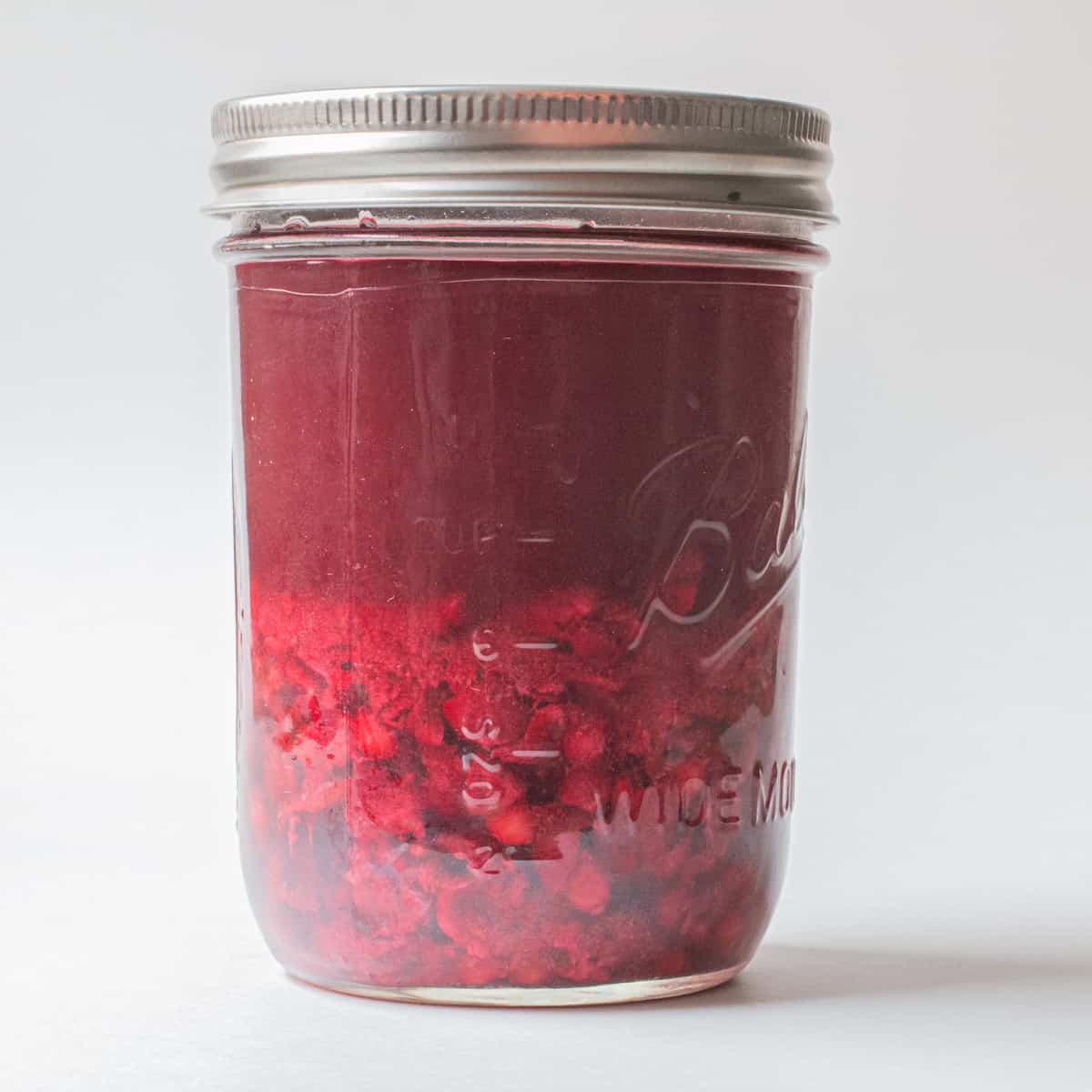
Infused Vinegar vs Fermented Vinegar
The vinegar in this post is infused. If you want to know how to make homemade fermented vinegar from fruit scrap (which is awesome), you'll want to see my Fruit Scrap Vinegar Recipe.
Background
My foraged fruit infused vinegar recipe started with a batch of concord grapes years ago. Chef told us to juice the grapes, and when we were done passing the juice through a strainer, there was all sorts of skin an pits left. The daily changing menu relied on our experimentation, so I called dibs on the berry pits, sensing some possibility.
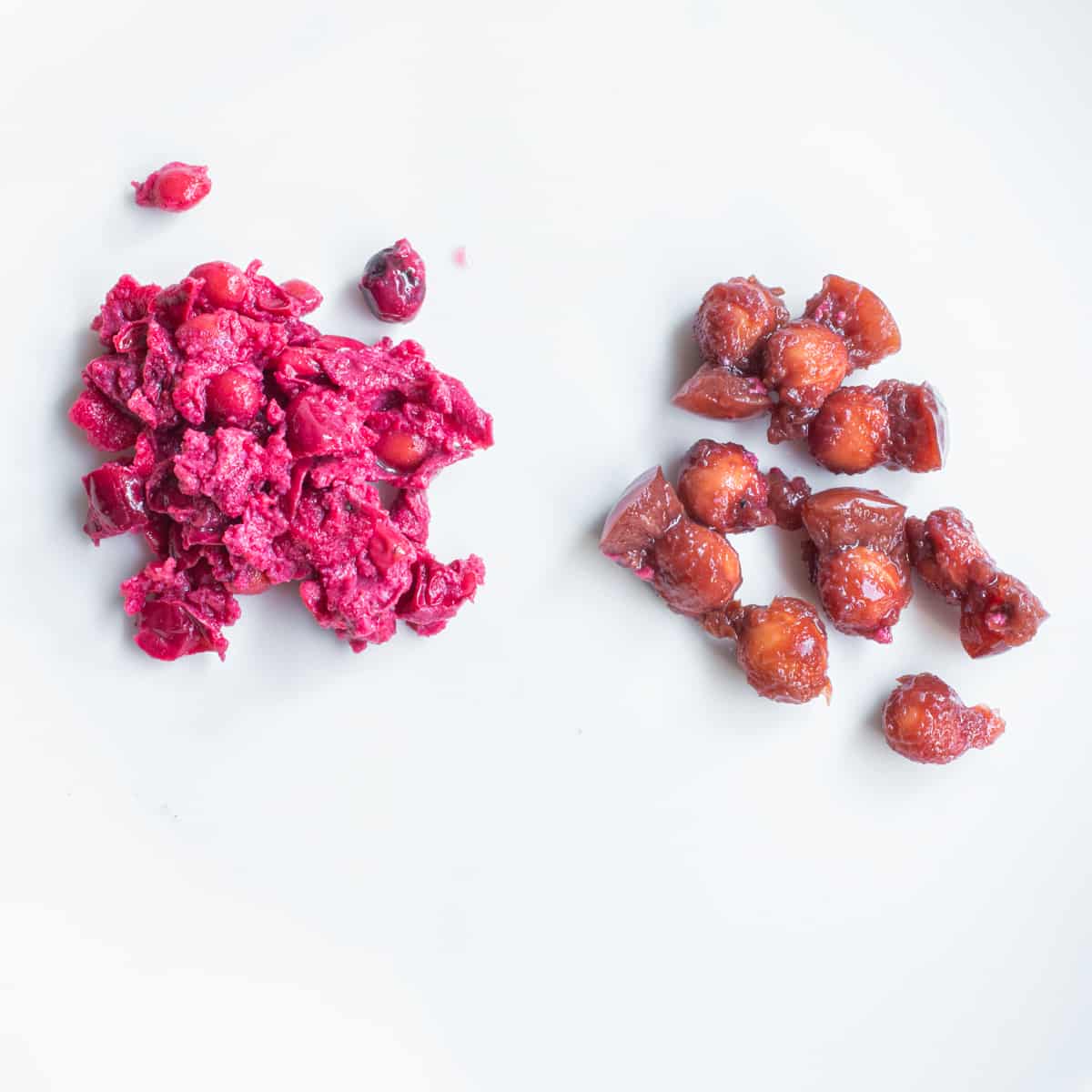
I poured vinegar over them with the idea of infusing it with the flavor of the berries, which I suspected would only get better hanging out in the cooler for a month or two while I thought of what make with it. Vinegar and alcohol have this uncanny ability to extract flavors from things, I love experimenting with them to layer flavors.
After a couple months, I got around to straining and cooking with the vinegar. I started cooking it down to a syrup with sugar to make a gastrique, or sweet and sour sauce. The vinegar was impressive: deeply colored, fragrant, with a flavor like concentrated grape essence, made without grape juice.
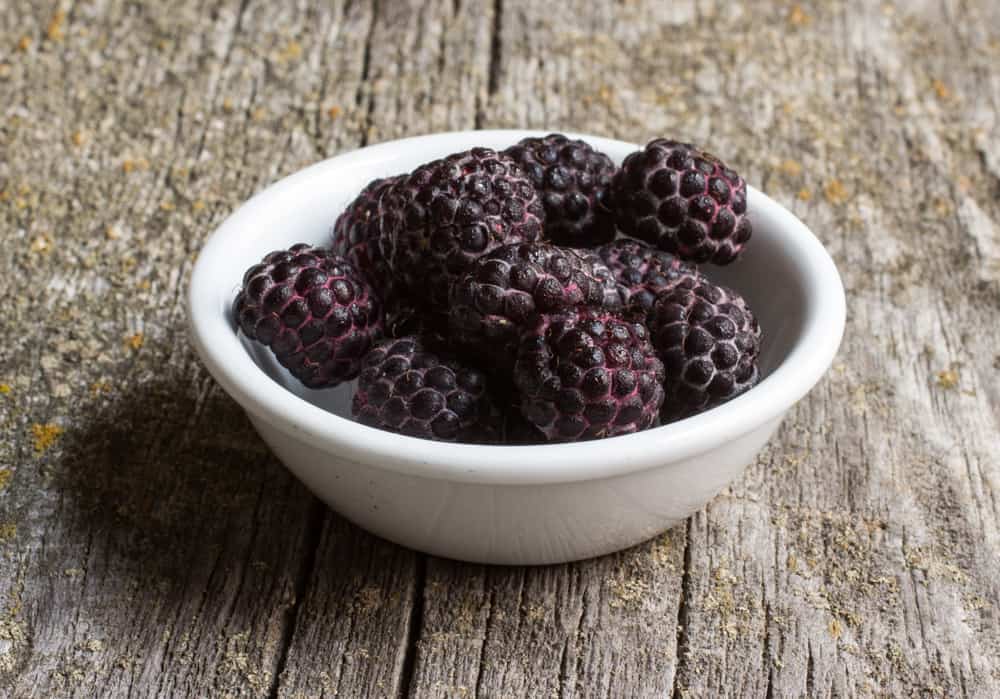
Dark Berries Make the Best Infused Vinegars
It worked so well I started saving all the skins and pits from all the fruit I could get my hands on. Results varied, but one things was constant: dark, ripe fruit like cherries, blackberries, red wine grapes, josta berries, and currants (I could go on) were the best. Stone fruit like peaches, paw-paws, and wild plums was ok, but nothing like the berries.
Ambitious cooks might mention that you can make vinegar out of fruit, and that's true. It takes time though. It also usually needs fruit juice to make the base to which the mother starter is added. If you're feeling ambitious and have a bunch of extra ripe fruit, by all means, try it.
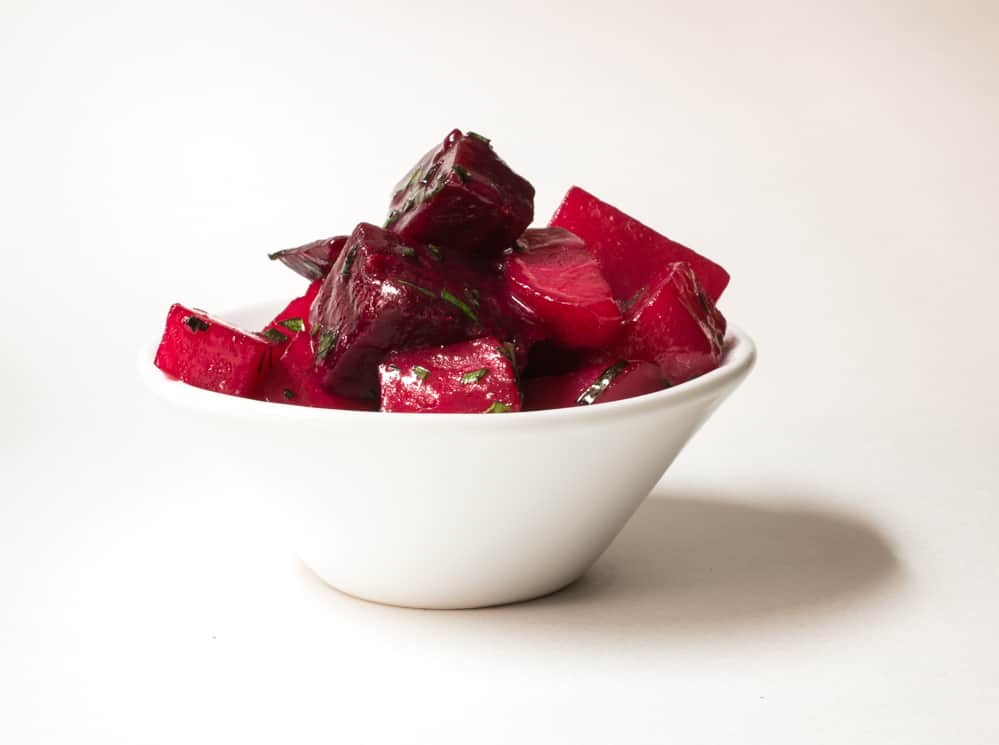
The infused vinegar here is great because it lets you get juice for making jam and such, and infused vinegar without sacrificing one for the other. At the end of the day, you're making something from what other people throw away which is real cooking, a thrifty kitchen hack.
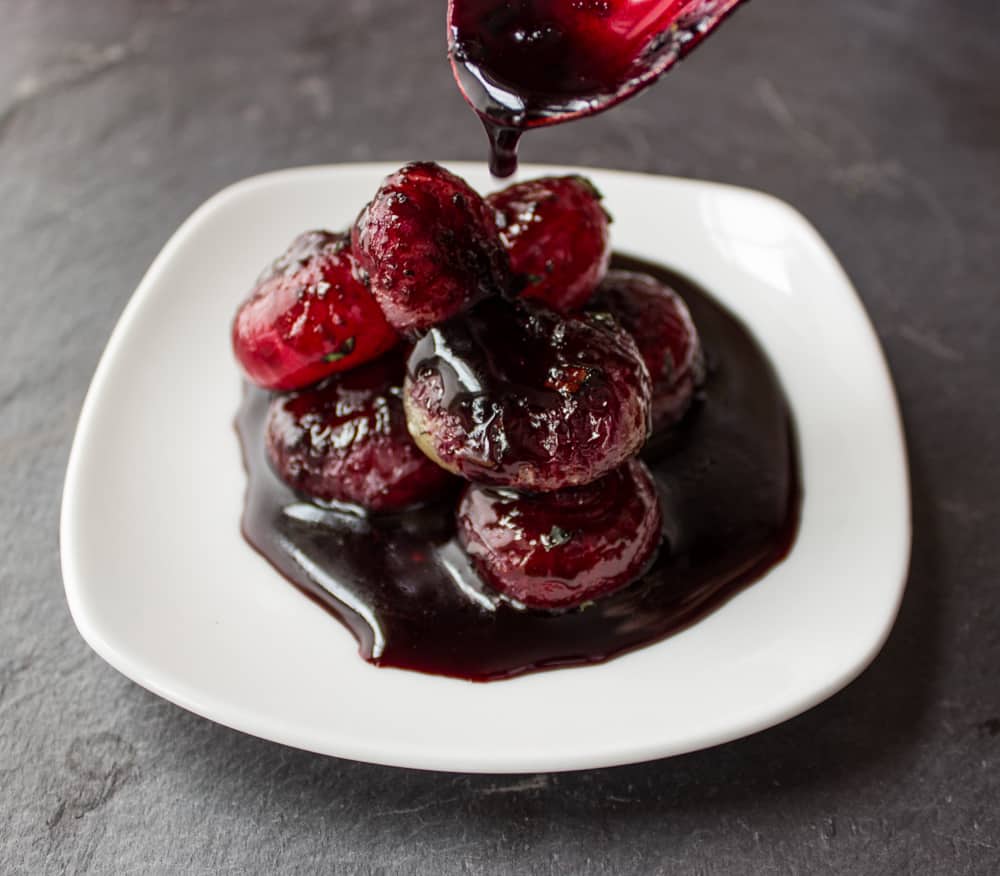
What can you do with berry infused vinegar?
- Cook it down, then add meat stock, reduce a bit more and whisk in butter to thicken it for a simple pan sauce (especially good with poultry and game).
- The vinegar can be cooked down by itself and a pinch of sugar too to make a simple sauce, then just whisk in a knob or two of butter to thicken at the end.
- Use it to deglaze a pan of roasted beets, adding a little butter and herbs at the end to make a sweet and sour glaze.
- It makes an excellent base for pickles, especially things that go well with fruit, like beets, or to layer flavor, pickle a fruit (like red wine grapes) in the vinegar you made from last year's harvest. Cherries are especially good like this, just make sure the pickle liquid is a bit sweet.
- If you make jelly from something (like elderberries), cook down some of the vinegar with the fruit you're going to make jam with to layer the berry flavor and add a bright note to cut the sugar.
- Reducing the vinegar with equal parts sugar would make an excellent flavor base for ice cream or panna cotta.
- Combined with a little sugar and reduced with spices, etc, it makes an excellent glaze for grilled foods, like pork chops or sweet and sour ribs.
- Cooking the vinegar with some sugar to taste and reducing to a light syrup will make a great garnish for vanilla ice cream, just like Italians do with balsamic vinegar.
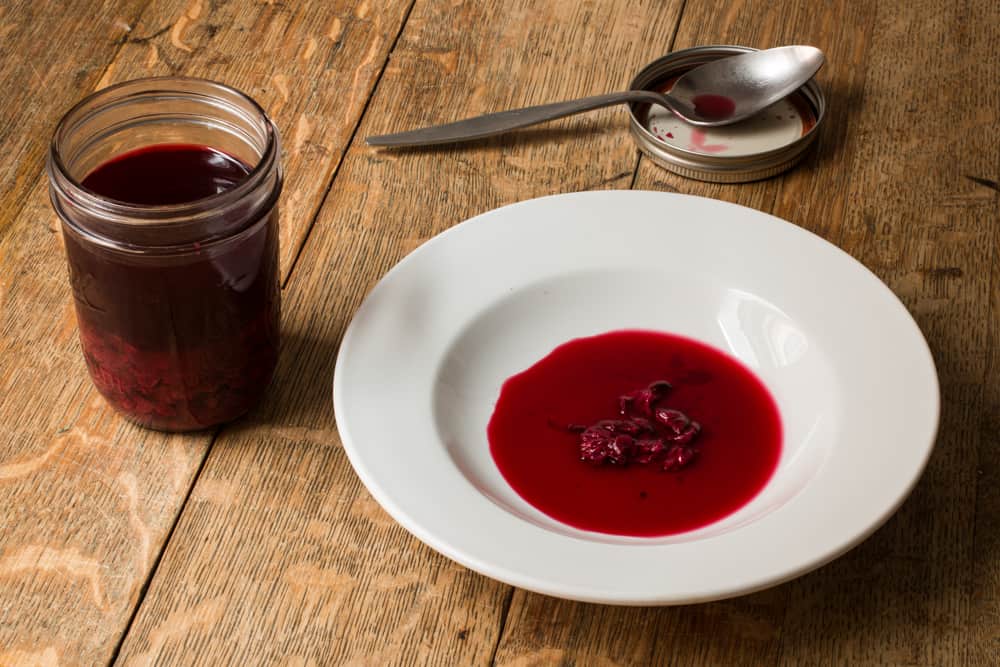
More
How to Make Foraged Berry Infused Vinegar
Equipment
- 1 Mason jar or glass container
Ingredients
- 1 part berry pits and skins left over from juicing
- 1 part rice wine vinegar or white wine vinegar, or red wine vinegar
Instructions
- Combine the vinegar and berry pits/skin in a non-reactive container (I like a mason jar) and refrigerate for a month, shaking occasionally.
- Occasionally taste the vinegar to check on it's progress, when it's to your liking, strain it through a fine strainer or cheesecloth, pressing down on the skins and pits with a spoon or ladle to get as much vinegar as possible. If the vinegar is very cloudy, strain it again.

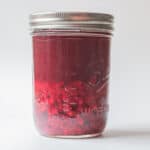
Bo
Hi Alan, what would you say is the largest flavour difference between your fermented fruit scrap vinegar and the infused vinegar?
Alan Bergo
Infused vinegar has a fresh flavor of the fruit that's used. Vinegar made from fermented fruit is very different the flavor changes. For the best of both worlds you can infuse a fermented vinegar with the fresh fruit, heating it to kill the fermentation after if you really want to lock the flavor in,
Catherine Zanev
Thank you very much this recipe and your overall wonderful website. Have you tried using apple cider vinegar for this?
Alan Bergo
That would work fine, and thanks!
Barbara
How do you safely store the infused vinegar? Canned? In the fridge? At room temperature? How long does it last?
Alan Bergo
It will last forever. In the fridge, room temp. Treat as regular vinegar.
Kathy Smith
I'm looking for quantity information here. How much vinegar per pound of berry skins and seeds?
Alan Bergo
I'd start with equal parts by volume, which should be comparable to weight here. I forgot to add I usually season it with a little sugar to taste after the maceration.
Jackie Skrypnek
Thanks for this recipe, Alan - I was looking for something other than jam or syrup to do with a bunch of chokecherries! I just wanted to double check that there isn't an issue with the vinegar drawing the toxic element out of the chokecherry pits? Thanks!
Alan Bergo
Indigenous people have used the entire chokecherry, stone and all, as a food product for millenia from Siberia to North Dakota, to The Middle East. Just find a way to apply heat to the stones. You could boil them, dehydrate and crush to a flour and infuse, etc. If you don't crack the stones and you only do a maceration, if it makes you feel more comfortable, bring the vinegar to a simmer before you bottle it, after you strain.
Julianne Vanderhoop
My pear vinegar is developing a mother on top is that a problem?
Alan Bergo
Hi Julianne. I can probably help you trouble shoot that, but I need more information. This post is about a simple maceration of vinegar and berries, not fermentation to create vinegar. Walk me through the process you're using to make pear vinegar and describe the "mother". You can also send images to alanbergo3 at gmail.com